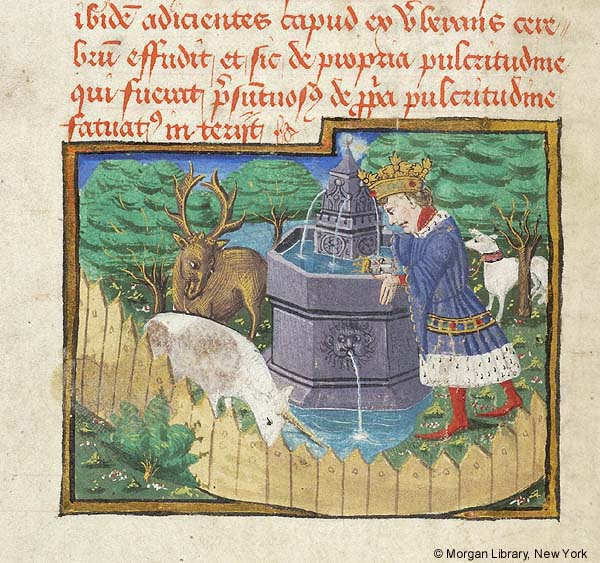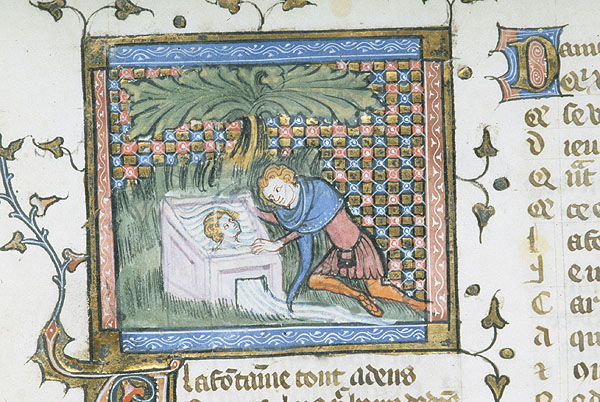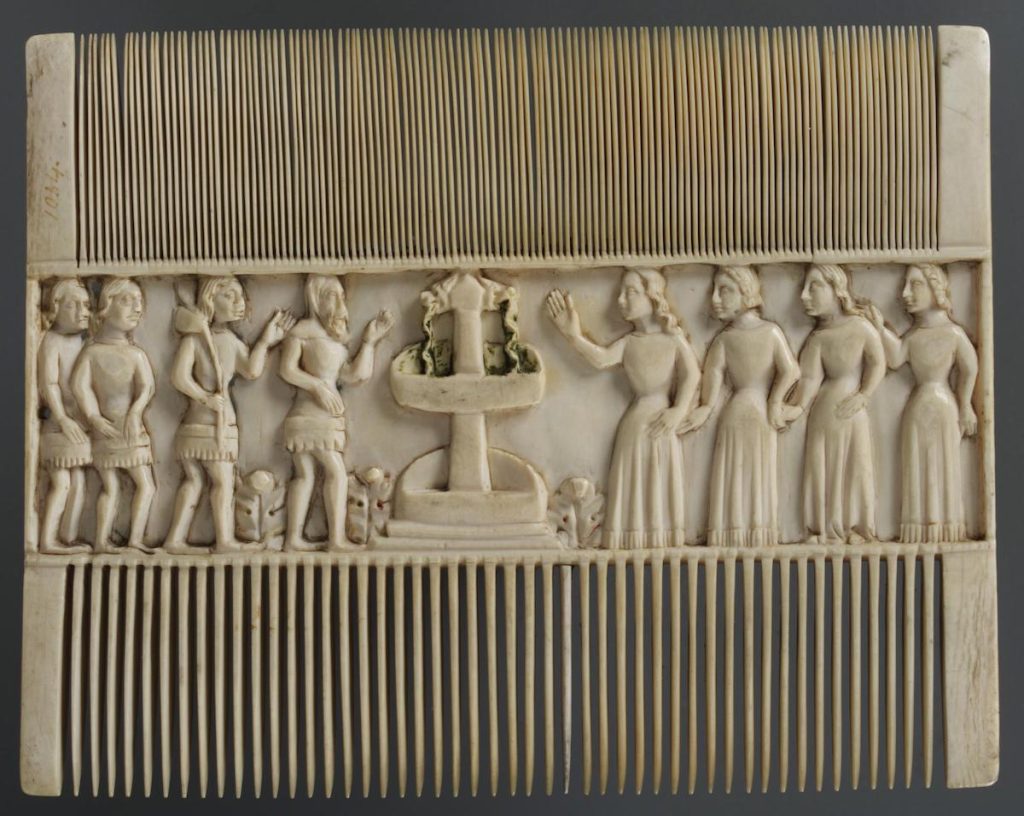

Please save the date for the next Index of Medieval Art conference, “Whose East? Defining, Challenging, and Exploring Eastern Christian Art” on November 11, 2023.
This conference asks how the concept of “the East” has shaped perceptions of Eastern Christianity generally and Eastern Christian Art more specifically, in Euro-American scholarship as well as in the popular view. Building on or dismantling such historical divisions as Western/Eastern Roman Empire, Latin/Orthodox, or simply East/West, speakers will explore what “East” and “East Christian” mean, how the boundaries of these concepts changed over time, and where exactly are the edges of the geographic, political, and religious “East.” This conference will offer a new understanding of the eastern Christian world by examining its cultural production in its own right and demonstrating that its rich, complex, and significant artistic production was not at the periphery of somewhere else, but rather at the center of an interconnected world.
The conference will focus on the regions of medieval Syria, the Caucasus, and Eastern Europe. These territories are often neglected in medieval and early modern scholarship as regions that are merely “East” of somewhere more important. The material culture produced in the regions “east” of Western Europe—such as modern-day Ukraine, Serbia or Romania, to mention only a few—has for a long time been considered of “lesser” value or importance compared to France or Italy; the Caucasus is often considered only in relation to Byzantium; and art produced in Armenia, Georgia and Anatolia has often been discussed in terms of a center/periphery dichotomy. Rarely is the visual production of these areas allowed to speak for itself.
Speakers will include:
Anthi Andronikou (University of St Andrews)
Breaking Free from Bias: Eastern Christian Art between the Islamic and Western Worlds
Jelena Bogdanović (Vanderbilt University)
On Theory and Architecture in the Medieval Balkans
Jana Gajdošová (Sam Fogg)
Byzantium and the Court of Emperor Charles IV in Prague
Gohar Grigoryan (University of Fribourg)
The East-West Paradigm in HighMedieval Armenia: The Evidence of Polemical Writings and Visual Sources
Christian Raffensperger (Wittenberg University)
A Third Category: Rus in History and Art
Erik Thunø (Rutgers University)
Nobody’s East: The Interconnected World of South Caucasian Cross Steles
Tolga Uyar (Nevsehir Haci Bektas Veli University)
Thirteenth-Century Monumental Painting in Cappadocia: The Artistic Bonds between Byzantium, Seljuk Rūm, and Eastern Mediterranean World
Margarita Vulgaropoulou (Ruhr-Universität Bochum)
Whose Adriatic? Blurring theBoundaries of East and West in the Artistic Production of the Late Medieval and Early Modern Adriatic
Respondents:
Antony Eastmond (Courtauld Institute of Art)
Mirela Ivanova (University of Sheffield)
The conference will be hosted in person as well as live-streamed. The conference schedule, location details, and live stream registration link will be posted in September.
It’s May again, the month that marked the traditional beginning of summer in the Middle Ages. Much as it still is today, this seasonal turn was celebrated with festivals that set aside the toil of spring in favor of games and leisure. In medieval iconography, this time of the year is also captured in a variety of courtship scenes belonging to a genre known as “courtly love.” Such scenes sometimes represented the month of May with depictions of couples playing a game of chess or setting out on horseback for the sport of falconry and hunting, as well as holding merry engagements around fountains or flowing springs. The typical zodiac sign associated with the month of May was Gemini, usually represented by a pair of either twins or lovers, which epitomized the idea of two for this time of year: a double, a match, and a mirror image.
The iconography of mirror and fountains is similar in its ability to emanate personal reflections of a viewer, which made them desirable themes to utilize in courtly imagery. While the idea of gazing at your “twin,” perhaps framed in a window or seated across a chessboard, was celebrated in the Middle Ages, looking at your own reflection for too long, or for the wrong reasons, was frowned upon. A classic warning appears in the tale adapted from Ovid’s Metamorphoses of the mythological Greek hunter Narcissus, who so loved his own reflection that he became fixated on it for life, rejecting all offers of love.

The Narcissus theme is represented in a late fifteenth century miniature in an English manuscript of the Confessio Amantis (“Confessions of a Lover”) by John Gower (d. 1408). The artist depicts a kingly Narcissus wearing a crown, a vair-lined garment, and a jeweled girdle while staring at his own reflection in a fountain (Fig. 1). Narcissus stands in a fenced enclosure surrounded by a unicorn, a collared dog, and a stag. The presence of the stag evokes an Aesopian fable with a similar message, usually called the “Stag and its Reflection” (or the “Proud Stag”), in which a stag admires his antlers in a pool for too long and is caught by the hunter. Like its captive animal companions, the stag echoes Narcissus’s enmeshment in his self-image and ties him to the fountain.
In the popular medieval romance known as the Roman de la Rose, by Guillaume de Lorris (fl. ca. 1230), the “Lover” (Amans) encounters the Fountain of Narcissus and is similarly drawn to look at the reflection of his face in the water (Fig. 2). Like Narcissus, the Lover in the Roman de la Rose is taken with his own beauty in the pool and leans over to admire it; but unlike that of Narcissus, the pool is also the “Fountain of Love,” which destined all who looked in to fall in love. Thus, the Lover’s self-reflection is deeper and more altruistic than his external features, allowing him to overcome the curse of vanity and experience an ideal transformation.

Among the most interesting imagery related to mirrors, fountains, and love is that on Gothic mirror cases, also called valves de miroir. Over seventy examples currently exist in the Index of Medieval Art database, and you can find them by browsing for “Mirror Case” under Work of Art Type. Such mirror cases would twist open to reveal a polished metal disk for personal reflection, while imagery on the closed case told an allegorical story linked with chivalric lore. Mirrors have been part of society since antiquity when they were first made of highly polished stones. The mirror is an essential tool in the iconography of the Toilet of Venus, and it also became both a virtuous attribute for the self-aware personification of Prudence and a sign of vice for that of Vanity. Yet the images carved on Gothic ivory mirror cases rarely warn about the dangers of selfish looking. Instead, they often present scenes of youthful love. On a mirror case in the Walters Art Museum, within the arched portcullis of a castle, a man cups the chin of a woman in a gesture called “chin-chucking” (Fig. 3).
On the Walters ivory mirror back, other young people engage in friendly activities while a group of disabled or elderly persons parade toward the waters of the allegorical “Fountain of Youth” seeking an immortalizing dip. A similar procession of four pairs of men and women meeting at a central two-tiered fountain issuing streams of water appears on a double-sided ivory comb in the Victoria & Albert Museum, made ca. 1400 (Fig. 4). Here, the couples do not gaze into the fountain, nor do they bathe in its restorative waters, but the fountain separates the groups into symmetrical pairs, suggesting an impending connection. The glossy surfaces of mirrors and fountains, with a myriad of possible reflections—of a person’s vanity or deep self-knowing, the promise and capture of love, or the hope of love as a soothing, restorative balm—made these water features the appropriate gathering places for courtly lovers.

The month of May can resemble December for those of us on the academic calendar. The buzz of the semester diminishes to a low hum; there are fewer events, fewer emails to answer, and fewer faces around campus as people take time away from university life. Some might take a break from their work to review their activities and reconnect to individual goals and missions. These yearly transitions can also be times of reflection. Wherever this summer takes you, for work or on trips to faraway lands, we wish you good health and safe travels!
Select Subjects of “Love” Interest in the Index of Medieval Art
The following iconographic headings can be accessed in the Index of Medieval Art Subject List:
Married Pair —The iconographic depiction of a husband and wife together, identified or not.
Marriage—A scene of matrimony or wedlock celebrating the union of two people as they become spouses.
Castle of Love—The “Castle of Love” allegory is associated with the iconography of chivalry and courtly love and is often represented on fourteenth-century ivory mirror cases and caskets. Also known as the Siege (or Attack) on the Castle of Love, it typically includes the God of Love (Eros or Cupid) holding a bow and arrow and positioned on the top of a castle while women, couples, and lovers defend the tower, sometimes by tossing roses on battling equestrian knights below.
Courting—Index subject incorporating various scenes of courtly love, including crowning lovers, or couples chin-chucking, also used in combination with scenes of falconry, hunting, or chess.
Couple—The term to describe a pair of people, usually a man and woman depicted as lovers.
Falconry—Also known as “Hawking.” The sport of hunting with predatory birds is especially associated with the iconography of the Labors of the Month for April and May and scenes of courtship with figures and couples holding the birds of prey.
Fountain of Love—An allegorical fountain for courting lovers as described by the fourteenth-century French composer Guillaume de Machaut.
Fountain of Youth—An allegorical fountain or spring which, according to legend, had the power to restore youth to anyone who bathes in its waters.
Labors of the Month, May—The occupation for the month for May, usually represented by an outdoor scene of courting or the sports of hunting and falconry, often by equestrian couples. Variants of this scene include the courting lovers walking in a landscape, sometimes holding hawks, falcons, flowers, or branches, or sometimes depicted in a scene of merriment involving musicians.
Mirror—A polished surface, often held by a handle or decorative frame, and reflecting a clear image of what it is pointed at. Attribute of the vice personification of Vanity. Sometimes held by the goddess Venus.
Sexual Activity—The subject for figures engaging in any explicitly sexual activity. Often suggested by two people lying down in close proximity to each other, possibly nude, possibly embracing each other, and sometimes in a bed.
Further Reading
Camille, Michael. The Medieval Art of Love: Objects and Subjects of Desire. New York: Abrams, 1998.
Hult, David F. “The Allegorical Fountain: Narcissus in the ‘Roman de la Rose.’” Romanic Review, 72, no. 2 (1981): 125–50.
Lewis, C. S. The Allegory of Love: A Study in Medieval Tradition. Oxford: Oxford University Press, 1973.
Peklar, Barbara. “The Imaginary Self-Portrait in the Poem Roman de la Rose.” Ars & Humanitas 11, no. 1 (2017): 90–105.
Other Resources
The British Museum. “A ‘Greatest Hits’ of medieval myths on a casket | Gothic Ivories 1 | Curator’s Corner S7 Ep4.” YouTube Video, 11:57. June 23, 2022. https://youtu.be/IA0sWopdLxs.
Gothic Ivories Project at The Courtauld Institute of Art, London. Accessed February 14, 2023. http://www.gothicivories.courtauld.ac.uk/.